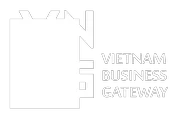This article explores the conditions and requirements for a foreign investor establishing a Foreign Direct Investment (FDI) company in Hai Phong City, Vietnam. It addresses Hai Phong’s current investment landscape, the impact of its proposed merger with Hai Duong Province, and strategic considerations for setting up a business. We will cover the city’s strategic location, infrastructure, labor force, investment incentives, and current investment trends, while analyzing the merger’s context, pre- and post-merger dynamics, and implications for foreign investors. Practical experiences from existing businesses and key recommendations are included to guide your investment decision.
Why Should Hai Phong Be Your Next Destination for Doing Business?
Hai Phong, Vietnam’s third-largest city, is a vital industrial and port hub in Northern Vietnam, strategically located 120 kilometers east of Hanoi. Its position as a coastal city enhances its role as a trade gateway, with the Hai Phong Port handling a significant portion of Vietnam’s maritime exports. The city’s connectivity to Hanoi via National Highway 5 and the Hanoi-Hai Phong Expressway, coupled with proximity to Cat Bi International Airport, ensures efficient logistics for businesses. Hai Phong’s economy is driven by manufacturing, with key sectors including electronics, automotive, textiles, and food processing, contributing to its status as one of Vietnam’s fastest-growing urban centers. In 2023, Hai Phong ranked second in the Provincial Competitiveness Index with a score of 70.34, reflecting a business-friendly environment that supports foreign investment.
The city’s suitability for foreign investment spans multiple sectors. Manufacturing thrives due to its industrial parks and skilled workforce, while logistics benefits from the port’s capacity. Emerging technology sectors, such as software outsourcing and service industries supporting industrial operations, also show promise. The proposed merger with Hai Duong Province, set to create a new Hai Phong City by July 1, 2025, will expand its economic scale, combining Hai Phong’s port-driven strengths with Hai Duong’s inland industrial and agricultural capabilities. This transformation positions Hai Phong as an increasingly attractive destination for foreign investors seeking to capitalize on Vietnam’s growing economy.
Infrastructure and Transportation Connectivity
Hai Phong’s infrastructure is a cornerstone of its appeal for FDI. The city’s transportation network includes National Highway 5, connecting to Hanoi in under two hours, and National Highway 10, linking to southern provinces like Nam Dinh. The Hanoi-Hai Phong Expressway, completed in 2015, is among Vietnam’s most modern highways, enhancing connectivity. Highway 356 runs through the city center to the coast, and a connecting road links to Quang Ninh Province, facilitating regional trade. The city’s railway network, part of the Hanoi-Hai Phong line, supports freight and passenger transport, while Cat Bi International Airport offers domestic and international flights, strengthening Hai Phong’s global reach.
The Hai Phong Port, one of Vietnam’s largest, is a critical asset, handling substantial maritime trade and supporting export-oriented industries. The Dinh Vu-Cat Hai Economic Zone, encompassing eight industrial parks, integrates port access with manufacturing facilities. Key industrial parks include VSIP Hai Phong, spanning 1,600 hectares with tenants like FujiFilm and Kyocera, and Deep C, covering 3,400 hectares with over $4 billion in investments. Nam Dinh Vu Industrial Park, with its internal seaport, is unique in Vietnam, accommodating ships up to 40,000 DWT. These parks offer ready-built factories, reliable utilities, and logistics services, enabling rapid operational setup.
Post-merger, the new Hai Phong City will integrate Hai Duong’s infrastructure, including National Highway 37 and the Hanoi-Hai Phong railway’s seven stations in Hai Duong. This expansion will enhance connectivity between inland industrial areas and coastal ports, though investments may be needed to align Hai Duong’s utilities with Hai Phong’s standards. Plans to build 15 additional industrial parks in Hai Phong, covering 6,200 hectares, signal future growth. The merger will likely accelerate infrastructure upgrades, creating a more cohesive economic zone.
Labor Force
Hai Phong’s labor force, estimated at 1.1 million workers, represents over 57% of its 2.07 million population. The workforce is young, diligent, and adaptable, with a significant portion employed in industrial clusters, particularly in electronics and manufacturing. The city’s labor participation rate is high, reflecting its role in the Hanoi-Hai Phong metro area, which accounts for 22% of Vietnam’s labor force. However, competition for skilled labor in high-tech sectors requires companies to invest in training.
Educational institutions bolster workforce quality. Hai Phong University, Vietnam Maritime University, and Hai Phong Medical University produce graduates in engineering, business, and technology. The Hai Phong Industrial Vocational College, established in 1961, offers training in robotics, artificial intelligence, and automotive engineering, aligning with industry needs. These institutions ensure a steady supply of skilled workers, though additional training may be necessary for specialized roles.
Post-merger, the labor force will expand to include Hai Duong’s 1.2 million workers, drawn from a population of 2.59 million. Hai Duong’s workforce is similarly young and cost-competitive, with strengths in manufacturing and agriculture. Vocational schools like Hai Duong Vocational College support industrial training, complementing Hai Phong’s educational ecosystem. The combined labor pool will reduce recruitment pressures and offer diverse skill sets, enhancing Hai Phong’s appeal for large-scale projects.
Investment Incentives and Support Policies
Hai Phong provides substantial incentives, particularly in the Dinh Vu-Cat Hai Economic Zone, to attract FDI. Investors benefit from a corporate income tax (CIT) rate of 10% for 15 years, a four-year tax exemption, and a 50% reduction for the next nine years. Personal income tax for employees in the economic zone is halved, and import-export taxes, VAT, and special consumption taxes are exempted in non-tariff areas. These incentives lower operational costs and enhance profitability for manufacturing and export-oriented businesses.
The Hai Phong Department of Planning and Investment serves as the primary agency for investor support, streamlining business registration and licensing processes. The city organizes investment promotion activities, such as delegations to South Korea and Japan, to showcase its potential. The Investment Promotion Agency, likely under the city’s administration, facilitates connections with local partners and provides market insights.
Post-merger, the new Hai Phong City may harmonize incentives, potentially extending Hai Phong’s robust policies to Hai Duong’s industrial parks. However, temporary adjustments could occur as administrative systems align. Investors should engage with the Department of Planning and Investment to stay updated on policy changes.
Current Investment Landscape
Hai Phong has attracted significant FDI, with major investors including LG, Kyocera, FujiFilm, and Regina Miracle operating in its industrial parks. The electronics sector is a cornerstone, with companies producing printers, cameras, and apparel components for global markets. Other prominent sectors include automotive, textiles, food processing, and shipbuilding, reflecting the city’s industrial diversity. In 2023, Hai Phong was among Vietnam’s top FDI destinations, alongside Ho Chi Minh City and Hanoi, with investments primarily in processing and manufacturing.
Hai Duong, before the merger, has also seen substantial FDI, with projects like Deli Vietnam’s $270 million stationery factory in Dai An Industrial Park, the largest foreign-invested project in the province. Japanese firms are exploring opportunities in semiconductors and high-tech agriculture, indicating Hai Duong’s growing appeal.
Practical experiences from businesses highlight Hai Phong’s strengths. LG’s investment in Trang Due Industrial Park underscores the city’s reliable infrastructure, though firms note occasional power shortages during peak seasons, requiring backup systems. In Hai Duong, Deli Vietnam benefited from local support but faced challenges with land availability, a constraint the merger may alleviate.
Investment Opportunities in Hai Phong Before and After the Merger with Hai Duong Province
Vietnam’s 2025 administrative reform policy seeks to streamline governance by reducing the number of provincial units from 63 to 34, enhancing economic efficiency and regional development. The merger of Hai Duong Province into Hai Phong City aims to create a centrally run Hai Phong City. The rationale includes optimizing administrative resources, integrating economic strengths, and fostering a larger, more competitive economic hub. Hai Phong’s port and industrial parks will complement Hai Duong’s inland manufacturing and agricultural base, creating synergies for growth.
The merger will form a new Hai Phong City with an area of 3,194 km² and a population of 4.66 million, meeting the criteria for a centrally-run city. Public consultations began in April 2025, ensuring stakeholder input.
Investment Situation Before the Merger
Before the merger, Hai Phong and Hai Duong each offer distinct investment opportunities. Hai Phong’s economy is anchored by its port and industrial parks, with a focus on electronics, automotive, and heavy industries. Its 2021 Index of Industrial Production grew by 18.15%, among the highest in Vietnam, driven by FDI in manufacturing. The city’s strengths include superior logistics, modern infrastructure, and a skilled workforce, but it faces land scarcity and labor competition.
Hai Duong, with a smaller but growing industrial base, has attracted FDI in high-tech manufacturing and agriculture. Its Dai An Industrial Park hosts significant projects, and the province aims to rank among Vietnam’s top 10 FDI destinations in 2024. Hai Duong’s advantages include lower labor costs and abundant land, but its infrastructure lags behind Hai Phong’s, particularly in utility reliability.
Both provinces benefit from Vietnam’s trade agreements, such as the CPTPP and EVFTA, enhancing market access for investors.
Changes After the Merger
The new Hai Phong City will encompass 3,194 km² and 4.66 million people, significantly expanding its economic scale. The administrative structure will feature a unified People’s Council and People’s Committee, with up to 14 departments, streamlining governance. The administrative center will remain in current Hai Phong City, ensuring continuity for existing businesses.
Infrastructure planning will integrate Hai Duong’s industrial parks, such as Dai An, with Hai Phong’s port and airport access. Investments in transportation, like upgrading National Highway 37, and utilities, such as Hai Duong’s Pha Lai thermo-electricity plant, will enhance connectivity and reliability. The city plans to develop 15 new industrial parks, adding 6,200 hectares, which will benefit from the merger’s expanded land resources.
Investment support mechanisms may be standardized, potentially extending Hai Phong’s generous incentives to Hai Duong’s areas. However, short-term policy adjustments could occur as the new administration aligns regulations.
Impact on Foreign Investors
The merger offers significant advantages for foreign investors. The expanded population and labor pool, combining Hai Phong’s 1.1 million and Hai Duong’s 1.2 million workers, will reduce recruitment costs and provide diverse skills, from high-tech manufacturing to agriculture. The larger market, with 4.66 million consumers, enhances opportunities for both B2B and B2C businesses. Integrated infrastructure will improve supply chain efficiency, linking inland production sites to Hai Phong’s port, a critical advantage for export-oriented firms.
Operating costs may initially rise due to infrastructure upgrades, but long-term savings are expected from economies of scale and lower labor costs in former Hai Duong areas. The merger’s centralized management could simplify administrative processes, reducing bureaucratic delays. Enhanced incentives, potentially including land subsidies in less developed areas, will further attract FDI.
Challenges include potential disruptions during the transition, such as delays in licensing or policy clarification. You should monitor these changes closely and engage local consultants to navigate the evolving landscape.
Recommendations and Strategies for Investors
Investors should prioritize sectors with strong growth potential in the new Hai Phong City. Electronics and high-tech manufacturing, driven by firms like LG and Kyocera, benefit from established supply chains and skilled labor. Automotive and supporting industries, including component production, align with the region’s industrial focus. Logistics, leveraging Hai Phong’s port and expanded inland connectivity, offers opportunities in warehousing and distribution. Green industries, such as renewable energy component production, align with Vietnam’s net-zero goals and Hai Phong’s sustainability initiatives.
To enter the market, investors should establish early contact with the Hai Phong Department of Planning and Investment to understand post-merger policies. Building relationships with local authorities and industry associations, such as the Vietnam Chamber of Commerce and Industry, will facilitate smoother operations. Leveraging Vietnam’s trade agreements, like the CPTPP, can enhance market access for U.S. firms.
Preparatory steps include conducting comprehensive market research to identify opportunities across the merged city, particularly in Hai Duong’s emerging industrial zones. Understanding local business culture, which emphasizes relationship-building and respect for hierarchy, is crucial. Investors should also assess infrastructure reliability, such as power supply, and plan for contingencies like backup generators.
Practical experiences suggest that firms like LG have succeeded by investing in local training programs to address skill gaps, while others, like Deli Vietnam in Hai Duong, benefited from proactive government support but faced land constraints. Post-merger, these constraints will likely ease, but investors should secure land early in high-demand areas like VSIP Hai Phong.
The new Hai Phong City, with its expanded scale and integrated resources, offers a dynamic environment for FDI. By focusing on high-growth sectors, engaging with local stakeholders, and preparing for transitional challenges, foreign investors can capitalize on this transformative opportunity.
Start your business in Hai Phong with VNBG
Hai Phong offers a unique blend of strategic coastal location, advanced logistics infrastructure, robust industrial parks, and strong government support, making it a prime destination for foreign investment in Northern Vietnam. With the upcoming administrative merger with Hai Duong, the newly expanded Hai Phong City will offer even greater economic scale, a diverse labor force, and improved inland-port connectivity. Investors can tap into opportunities in electronics, high-tech manufacturing, logistics, green industries, and more, while benefiting from generous incentives and streamlined licensing support.
VNBG is a trusted, full-service consulting firm with years of experience helping foreign companies establish and grow in Vietnam, including in Hai Phong. Whether you’re planning to set up a factory, service center, or logistics hub, VNBG can assist with everything from company incorporation, licensing, and tax advisory to recruitment, accounting, and legal compliance.
Contact us today for a free consultation and discover how we can support your successful entry into Hai Phong’s fast-growing market.
10 STEPS TO GET YOUR COMPANY FULLY OPENED AND READY TO RUN IN VIETNAM
OVERSEAS STUDY CONSULTING COMPANY SET UP IN VIETNAM

















